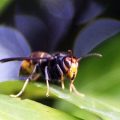随着PTE考生对PTE口语和PTE听力的重视,大家口语和听力的分数得到极大提高,但是PTE阅读渐渐成为考生们新的难题。
墨尔本悉尼文波PTE特别为PTE考生们挑选了适合练习PTE阅读的文章,主题,内容,长度都与PTE阅读题中的文章相似。激活学过的词汇,更新新的词汇,提高阅读速度,全面提升自己的阅读能力。
IN MEDIEVAL England peasants were permitted to graze their sheep on the lands of the nobility. There were no restrictions on how much their livestock could feed, but there was one ironclad rule: the peasants were not allowed to collect their animals’ droppings. Though the English nobles who came up with such regulations could not have known that the excrement was rich in nitrogen and vital for plant growth, they clearly knew that lands denied faeces were less productive. Today most farmers rely on synthetic fertilisers to do the nitrogen-enhancing job once reserved for dung. Urea, a compound of nitrogen, hydrogen, carbon and oxygen, can be made cheaply by mixing ammonia and carbon dioxide together at high pressure. The result is turned into pellets that can be scattered easily over fields.
Unfortunately, when such pellets are exposed to heavy rain, the urea they contain is quickly and wastefully washed away. A method of keeping it in place would thus be welcome. And Nilwala Kottegoda of the Sri Lanka Institute of Nanotechnology thinks she has one. As she and her team report in Nano, they have managed to bind urea molecules to a material that stops them dissolving too quickly in water. This material is hydroxyapatite, one of the components of bone.
Her choice of hydroxyapatite for investigation was no wild guess. It is already used to make capsules that release certain drugs slowly, in the way she wanted to achieve for urea. Hydroxyapatite is made by mixing phosphoric acid and calcium phosphate, so Dr Kottegoda simply added urea to the process. The result, she found, was that each molecule of the material clung on to six molecules of urea—a payload big enough to justify further testing.
To this end she and her colleagues steadily flushed water past samples of urea-enhanced hydroxyapatite held in tubes, while watching what happened using a spectroscope. The material shed its urea load gradually: 40% after 1,000 seconds; 60% after 2,000 seconds; 80% after 3,820 seconds. In contrast, when the researchers treated pure urea the same way, it was all gone in 320 seconds.
ironclad /aɪən’klæd/ adj. 装甲的;打不破的;坚固的
excrement /’ekskrɪm(ə)nt/ n. 排泄物(粪便)
ammonia /ə’məʊnɪə/ n. [化]氨,阿摩尼亚
pellet /’pelɪt/ n. 小球;小子弹(枪用) vt. 将…制成丸状;用子弹打;用小球扔
phosphoric /fɒs’fɒrɪk/ adj. 磷的(尤指含五价磷的),含磷的
phosphate /’fɒsfeɪt/ n. 磷酸盐(尤指用作肥料)





